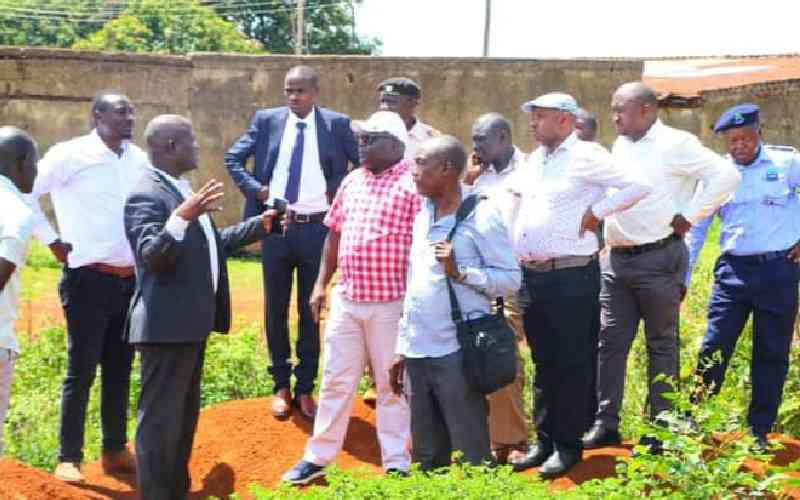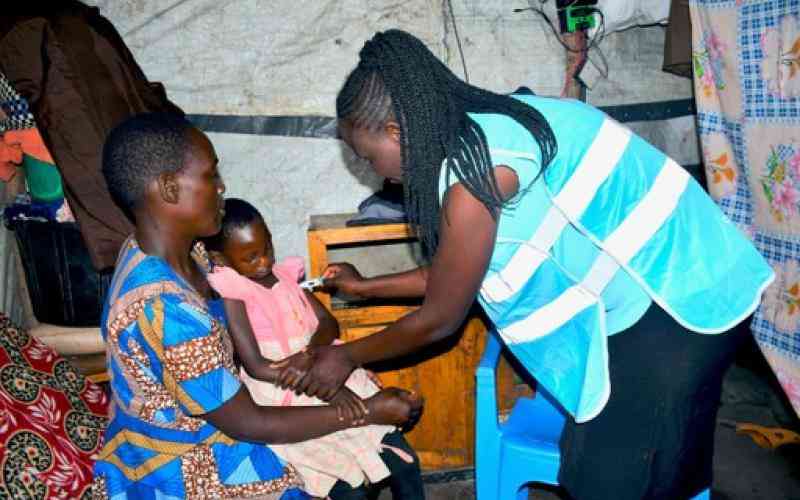BUSIA, KENYA: Mr Joseph Ebu is a smallholder farmer in South Teso district in Busia County.
For years, Mr Ebu has been growing sugarcane, which is the cash crop a majority of other farmers in his county and neighbouring regions rely on for an income.
But sugarcane farming has in recent years been dogged by numerous challenges, including high costs of production, low prices and delays in receiving payment from sugar millers.
Commercial benefits
“Once you deliver your sugarcane to the factory, you have to wait not less than a year to get paid. Further, the proceeds are not only delayed, but are also low, making it difficult for us to meet our daily financial obligations,” said Ebu.
These frustrations, coupled with the changing dynamics in the agriculture sector, prompted Ebu to diversify his crop, and he has found success with soya bean farming.
“Five years ago, I invested Sh2,500 in soya beans. I spent the money on buying seeds and preparing the land to plant them. Over and above this, I spent Sh4,500 to fund weeding and harvesting.
“Today, out of the initial investment of Sh7,000, I earn between Sh25,000 and Sh30,000 every three months from my two acres; that’s about Sh100,000 to Sh120,000 a year,” said Ebu.
“I am now able to educate my children in addition to financing other development activities within my farm.”
He said he used to earn about Sh25,000 from the same piece of land when he only grew sugarcane.
Ebu is the chairman of Akites Farmers’ Co-operative Society (AFCS), a group of 360 members who have been contracted by the Kenya Agricultural Research Institute (Kari) and other food companies to grow soya beans for sale.
“Over the last five years, a majority of us have uprooted our sugarcane and started soya bean farming. The crop, over and above its commercial benefits, boosts vital soil nutrients and thus increases land productivity.”
Kari buys the beans at between Sh50 and Sh80 per kilogramme, while Promasidor Kenya, a food manufacturer, buys them at Sh50.
Mr Steven Kasamani, a farmer in Mumias region, said it is getting more and more difficult to continue with sugarcane farming when the return on investment remains minimal.
“I replaced my one acre of sugarcane with soya beans, owing to the challenges that I was facing,” he said.
Stay informed. Subscribe to our newsletter
Mr Kasamani is the chairman of the Mumias District Federation (MDF) of soya bean farmers, a group of over 500 farmers currently growing the crop. He says the current prices of the beans are very attractive, enticing farmers to begin growing them. Most MDF members are intercropping soya with sugarcane.
Maturity period
“A kilogramme of soya beans is currently being bought at Sh50,” said Kasamani. “It also has a short maturity period of only three months.”
The crop grows best in warm climates. The seeds are sown one to two inches deep and two to four inches apart in rows 24 to 30 inches apart.
The seeds should not be soaked or watered too much as they may crack and germinate poorly. However, the planting beds need to be kept moist.
The crop is hardly attacked by disease or pests, but its pods should not be handled when wet or covered with heavy dew to avoid spreading fungus spores.
Soya beans contain one of the highest protein contents (43 per cent) among plant products.
They are also rich in heart-friendly fats, dietary fibre, calcium, iron and B-vitamins.
They can also be roasted and ground to make soya flour, an extremely rich source of protein that can be added to any food to enhance its nutritional content.
The flour can also be used alone or in combination with wheat or other grain flours to make crisps, sausages, bread or pancakes.
Soya beans can be processed to make soy vegetable oil, which is mainly used for frying and baking or as a condiment for salads. Fat-free beans can be used to make inexpensive, protein-rich animal feed.
Promasidor Kenya, which produces Sossi, a brand of soya pieces, said soya bean production in the country is at about 50,000 tonnes per annum.
The firm’s supply chain manager, Mr David Inyani, said they indirectly contracted about 1,000 small-scale farmers in Western Kenya through farmer organisations in 2011 to start a soya bean cultivation programme.
Value addition
The farmers work with about 10 community based organisations (CBOs), which provide structure and accountability. They also receive training on value addition to enable them develop products like soya milk and soya biscuits.
“Sossi’s popularity has been driven by the recognition of the necessity for proteins, especially in children’s growth, and the fact that most households in the country can afford it,” said Mr Mark Williams, the firm’s marketing director.
For more information or contacts, email [email protected]
 The Standard Group Plc is a
multi-media organization with investments in media platforms spanning newspaper
print operations, television, radio broadcasting, digital and online services. The
Standard Group is recognized as a leading multi-media house in Kenya with a key
influence in matters of national and international interest.
The Standard Group Plc is a
multi-media organization with investments in media platforms spanning newspaper
print operations, television, radio broadcasting, digital and online services. The
Standard Group is recognized as a leading multi-media house in Kenya with a key
influence in matters of national and international interest.
 The Standard Group Plc is a
multi-media organization with investments in media platforms spanning newspaper
print operations, television, radio broadcasting, digital and online services. The
Standard Group is recognized as a leading multi-media house in Kenya with a key
influence in matters of national and international interest.
The Standard Group Plc is a
multi-media organization with investments in media platforms spanning newspaper
print operations, television, radio broadcasting, digital and online services. The
Standard Group is recognized as a leading multi-media house in Kenya with a key
influence in matters of national and international interest.








